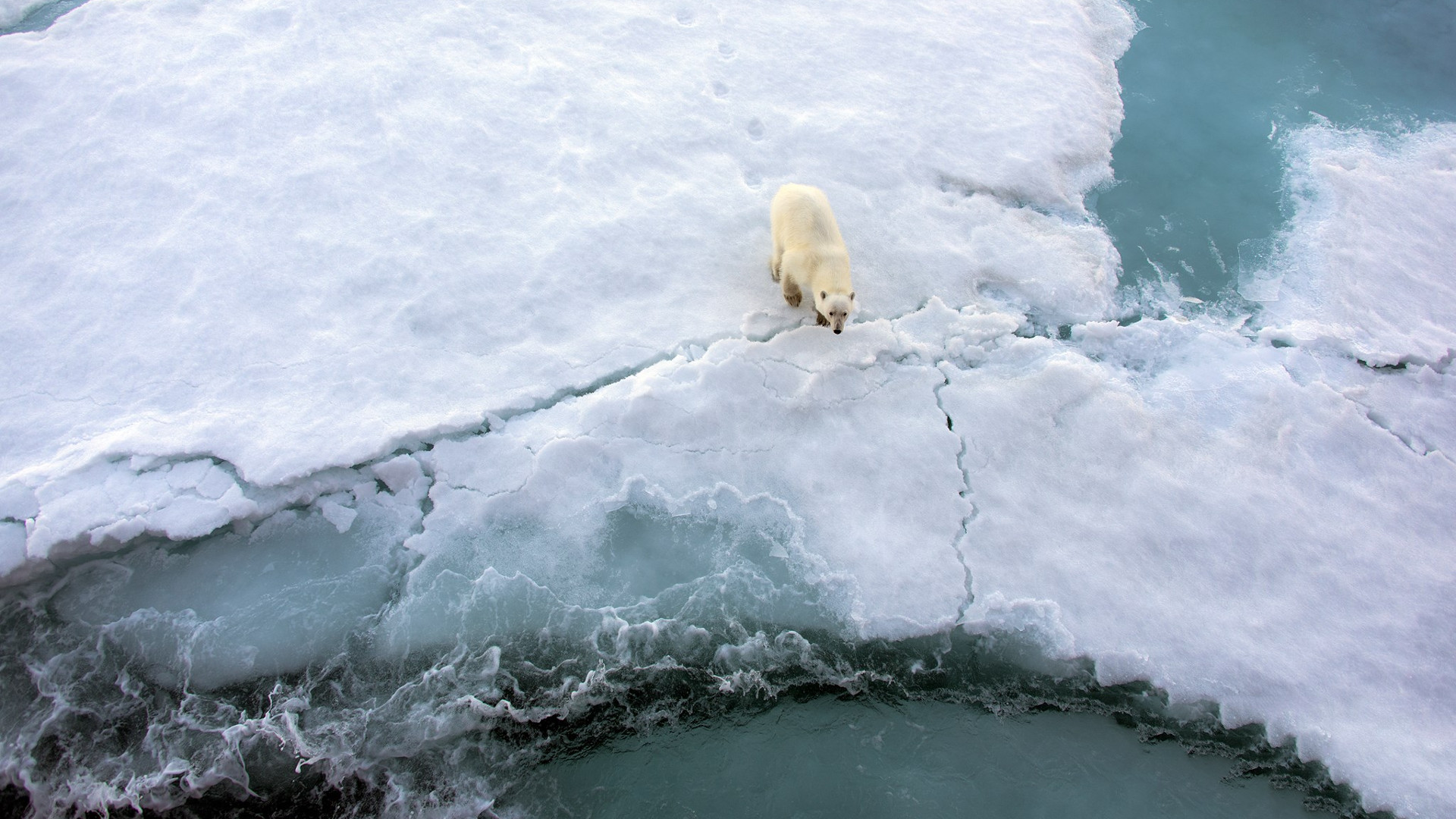Sometimes a polar bear is a living symbol of climate change.
Other times an image of a dying polar bear is basically raw meat for the people who want to deny the truth about global warming and demonize the scientists who are researching and communicating these important issues.
That’s what happened last year when National Geographic published a video and article showing an emaciated, starving polar bear and suggested that it was, essentially, the future face of climate change. It was a great illustration, and the bear was certainly starving, but in truth this specific animal was probably not a victim of climate change and may have been suffering from an injury or infection.
Climate deniers recognized that and jumped at the opportunity to denounce the National Geographic article, the photographers and the science of climate change.
“Climate-change deniers seized on that point to say, ‘see these climate activists and scientists can’t be trusted and by the way, here’s a picture of a perfectly healthy bear and polar bears are doing just fine,’ ” recounts science journalist and PLOS Biology editor Liza Gross. “They seize on these little fudges to say ‘climate change isn’t happening.’ ”
As the photographers realized they’d lost control of their well-intentioned narrative, Gross seized upon an opportunity to understand what had gone wrong — and to help others do better in the face of similar denial. She commissioned a collection of papers for the journal to discuss not only the truth about how Arctic marine mammals like polar bears are faring under climate change, but how scientists can more effectively use images and other tools to communicate the reality of global warming.
“I thought it would be interesting to explore how these emotive images can trigger exactly the opposite reaction their creators had in mind,” Gross explains. “I thought about how to touch on the issues that using images and storytelling raises in the context where powerful interests are abusing science — in this case, to block efforts to change the course of a disaster that promises to irreparably change life as we know it, wiping out god knows how many species and years of evolution in the process.”
The resulting papers, collectively titled “Confronting Climate Change in the Age of Denial,” were published this week. In addition to Gross, who provides an editorial, authors include Arctic mammal experts Sue Moore and Randall Reeves, psychologists Stephan Lewandowsky and Lorraine Whitmarsh, and science communication experts Michael Dahlstrom and Dietram Scheufele.
Dahstrom’s and Scheufele’s paper contains some interesting advice: It isn’t always effective, they write, to just communicate the facts about climate change. It’s often better to focus on a narrative that people can relate to, often by providing stories about how the scientific information was collected. This, they say, can help ensure that science communicators’ messages resonate more than the “facts” put out by the climate-denial industry. “Unless the scientific community also focuses on these long-term narratives to help build understanding of the process of scientific knowledge production, the facts or conclusions it puts forth might increasingly be seen on equal footing with arguments and judgments offered by other societal stakeholders,” the authors write. The paper provides several examples of resonant storytelling, along with a few potential pitfalls to avoid.
Lewandowsky and Whitmarsh, meanwhile, focus on the power of images, like the polar bear photo, to both teach and mislead. They write: “In connection with climate change, many pictures can be highly misleading, for example, when a snowball is used to ridicule the notion of global warming or when a picture of a dead crop is supposed to alert people to climate change.” They also offer several tips on how to pick the best images to help viewers care about the issues.
Gross says she hopes scientists and communicators reading the collection will come to a better understanding about the effectiveness of the narratives and photos they share. “I’d like to see people think carefully about the power of words and images to tap into emotions that reinforce what people already believe — regardless of the evidence,” she says. “I hope people think about how analogies or images can propagate false narratives by tapping into people’s pre-existing beliefs. A good example is the way news stories about vaccination still use photos of screaming, terrified children, which feeds directly into the fears of vaccine-hesitant parents and anti-vaccination campaigns.”
The collection was released the day after the United Nations’ latest report on climate change, which warned that the world needs to immediately transform its energy economy if there is any hope of avoiding very real disaster by mid-century. Given that context, the authors’ focus on the psychology of climate change may hold at least part of the key to motivating action.
“After all,” Gross says, “these are social issues, like so many other pressing issues of the day.”
Previously in The Revelator:
How Can We Improve Communication About Climate Change? We Have 5 Questions


